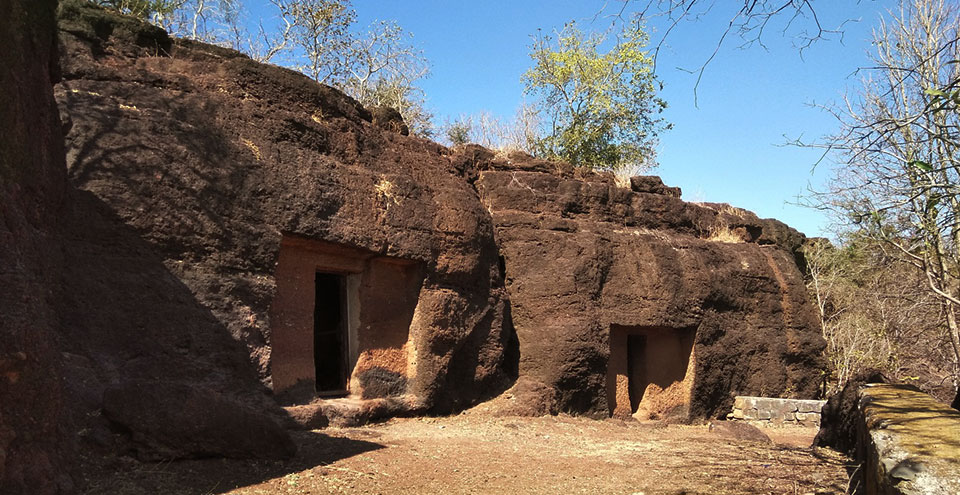
Buddhist Caves of Jhalawar: A Journey into Ancient Spirituality
Jhalawar, a historic district in Rajasthan, India, is not only renowned for its forts and temples but also for its lesser-known Buddhist caves. These ancient caves offer a glimpse into the region’s historical connections with Buddhism and provide a serene and contemplative experience for visitors.
Historical and Cultural Significance
Historical Context: The Buddhist caves in Jhalawar date back to the early centuries of the Common Era, a time when Buddhism was spreading across India. These caves were carved out during the reign of various local rulers who were patrons of Buddhism, reflecting the region’s spiritual and cultural diversity.
Cultural Heritage: The caves are significant for their role in Buddhist monastic life. They served as meditation and living quarters for monks and include a range of features typical of Buddhist cave architecture, such as chaityas (prayer halls) and viharas (monastic cells).
Key Attractions and Highlights
1. Main Buddhist Caves:
Buddhist Caves in Gagron Fort Area:
- Located near Gagron Fort, these caves are notable for their simplicity and serene environment. The Gagron Fort, a UNESCO World Heritage Site, provides a picturesque backdrop to the caves, enhancing the spiritual atmosphere.
Buddhist Caves Near Jhalawar City:
- Several caves are scattered around Jhalawar city, each offering unique features and historical significance. These caves vary in size and complexity, with some containing remnants of ancient carvings and inscriptions.
2. Cave Architecture and Features:
Chaityas: These are prayer halls within the caves, often featuring stupa relics and simple but elegant carvings. The chaityas were used for communal worship and meditation.
Viharas: These monastic cells served as living quarters for monks. They are typically simple, with minimalistic designs that reflect the ascetic nature of Buddhist monastic life.
Carvings and Inscriptions: Some caves feature ancient carvings and inscriptions that provide insights into the Buddhist practices and artistic styles of the period.
3. Scenic and Spiritual Setting:
Natural Beauty: The caves are set against the backdrop of the natural landscape of Jhalawar, which includes rolling hills and dense forests. The serene environment adds to the contemplative experience of visiting these ancient sites.
Spiritual Experience: The quiet and isolated setting of the caves offers a tranquil atmosphere ideal for meditation and reflection, allowing visitors to connect with the spiritual essence of the place.
Visiting Experience
Exploring the Caves: Visiting the Buddhist caves in Jhalawar offers a unique opportunity to explore ancient spiritual sites and experience the tranquility of the region.
Guided Tours: Hiring a local guide can enhance your visit by providing detailed information about the history, architecture, and significance of the caves. Guides can also help you navigate the area and interpret any inscriptions or carvings.
Photography: The caves provide excellent opportunities for photography, capturing the intricate carvings, architectural features, and natural surroundings. Be mindful of any restrictions on photography inside the caves.
Meditation and Reflection: Take some time to sit quietly and meditate in the caves. The peaceful environment allows for personal reflection and a deeper connection to the historical and spiritual significance of the site.
Tips for Visiting
Best Time to Visit: The best time to visit the Buddhist caves in Jhalawar is from October to March, when the weather is cooler and more comfortable for exploration. The summer months can be very hot, making outdoor activities less enjoyable.
Dress Code: Dress modestly and comfortably. Lightweight, breathable clothing is recommended due to the warm climate. Avoid wearing loud or bright clothing that may disrupt the serene atmosphere.
Travel Arrangements: Jhalawar is accessible by road from major cities in Rajasthan, including Jaipur, Kota, and Udaipur. Local transportation options include taxis, auto-rickshaws, and private vehicles.
Nearby Attractions: While in Jhalawar, explore other attractions such as the Jhalawar Fort, Sardar Patel Museum, and the local temples and gardens. These sites offer additional insights into the region’s history and cultural heritage.
The Buddhist caves of Jhalawar provide a fascinating glimpse into the region’s ancient spiritual heritage. With their serene setting, simple yet elegant architecture, and historical significance, these caves offer a unique and enriching experience for visitors interested in Buddhism and historical sites.
Explore the caves, appreciate the ancient artistry, and immerse yourself in the tranquil atmosphere to gain a deeper understanding of Jhalawar’s historical and spiritual landscape. Whether you are a history enthusiast, a spiritual seeker, or simply curious about ancient Buddhist sites, the caves of Jhalawar promise a memorable and contemplative visit.
